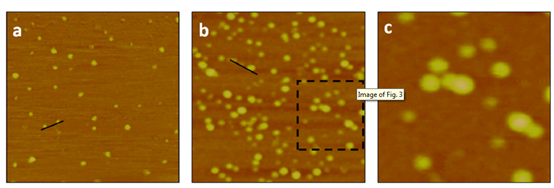- Home >> News >> Research Progress
Research Progress
Nanostructured interfaces with site-specific bioreceptors for immunosensing
In this work we propose a simple and effective approach to build nanostructured immunosensor platforms. The one-step strategy relies on i) the in situ formation of dithiocarbamates from the reaction between carbon disulfide and amine groups present on protein A ii) their attachment to gold nanopartides (AuNPs) and iii) the linkage of the modified AuNPs to the electrode surface which depends on the strong interaction between gold substrates and sulfur moieties. AuNPs and protein A are used to increase the surface coverage of Immunoglobulin G (IgG) and promote the oriented immobilization of the antibodies on the immunosensing interface. The modified gold surfaces with biomolecules were thoroughly characterized by a combination of techniques: UV-vis spectrophotometry conventional ellipsometry and atomic force microscopy. The immunosensor performance was assessed in real-time by surface plasmon resonance and by the highly sensitive total internal reflection imaging ellipsometry through the specific biorecognition between anti-IgG and the immobilized IgG molecules. We demonstrate that the presence of AuNPs improves the sensitivity of the anti-IgG specific detection whereas the presence of co-adsorbed CS2 is responsible for blocking the undesired protein nonspecific adsorption to the gold substrate. Overall we report a simple and innovative one-step method to chemically modify gold surfaces with protein A and AuNPs able to specifically detect antigen antibody interactions with capability of preventing protein nonspecific adsorption

